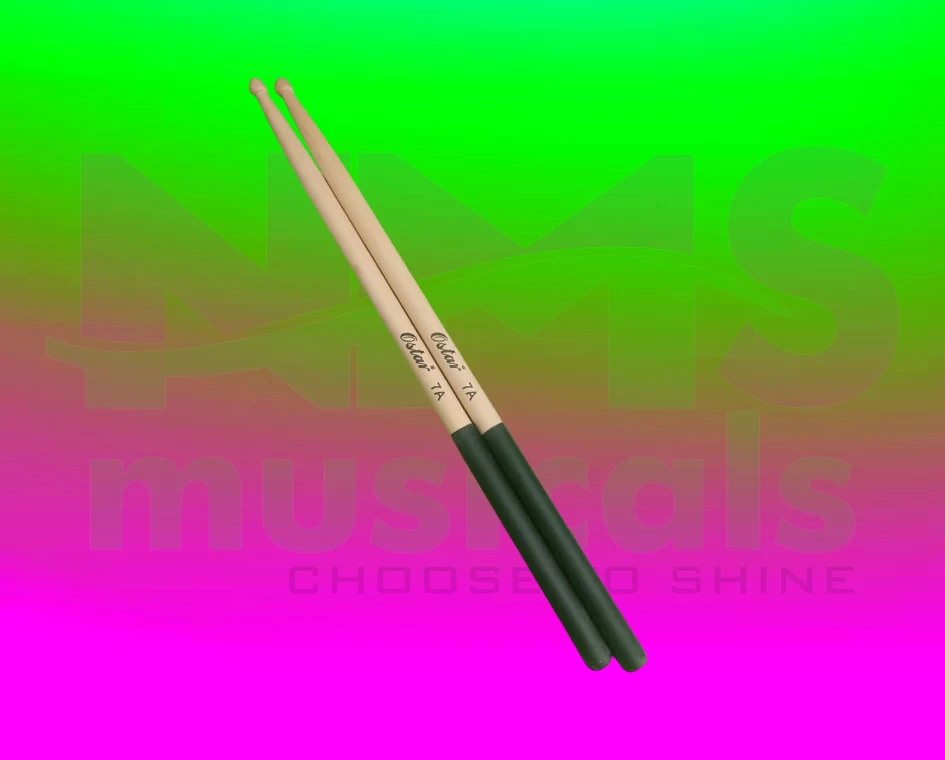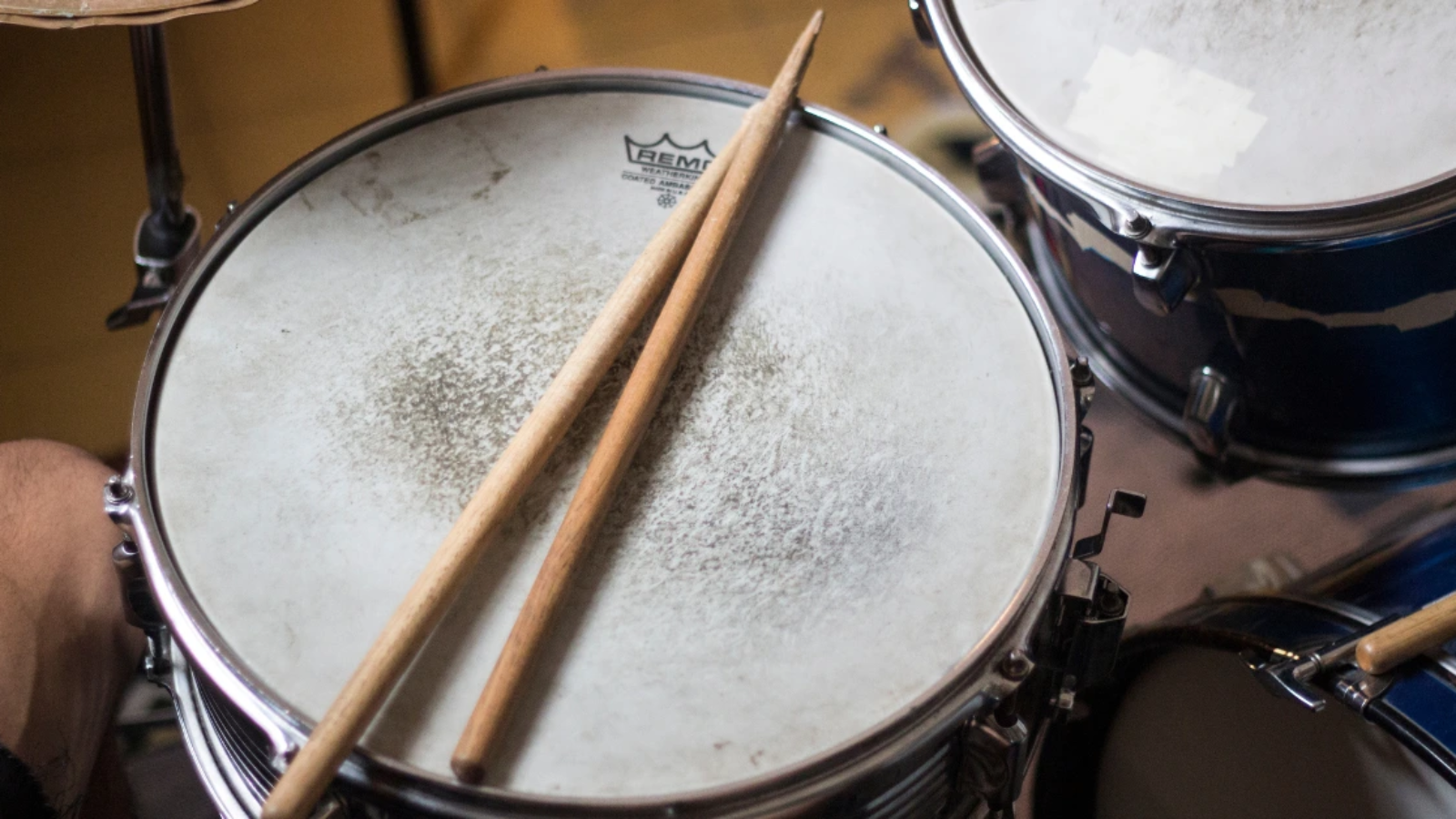Master Your Drumming: Choosing the Right Drumsticks for Drums Made Easy

Drumsticks might look simple, but choosing the right pair is essential for perfecting your drumming technique, especially when playing Indian percussion instruments. The wrong sticks can affect your sound quality, cause strain on your hands, and even damage your drumheads. Whether you are a beginner, a student in a music class, or a seasoned performer playing Indian instruments like pad drums or electronic kits, understanding how to choose the right drumsticks for your drums will make a massive difference.
1. Understand the Different Types of Drumsticks
Before you buy drumsticks, it’s important to know the types available in the market.
- Wood Tip vs Nylon Tip: Wood tips produce warm, natural sounds, ideal for acoustic Indian instruments. Nylon tips are more durable and offer brighter tones for electronic kits.
- Stick Size (e.g., 7A, 5A, 5B): 7A is lighter and great for kids or soft play, 5A is a balanced choice for beginners, and 5B is heavier for louder genres.
- Specialty Drumsticks: Brushes, rods, and mallets are used in Indian fusion music and studio recordings.
- Taper and Tip Shape: Longer tapers allow more rebound; tip shapes (oval, teardrop, round) affect the sound texture.
- Material: Hickory is most popular. Maple is lighter and great for younger players. Oak is heavier and lasts longer.
2. Choose Drumsticks Based on Drum Type
Indian drummers often use different types of drums compared to Western counterparts, so stick choice varies.
- Acoustic Drums: For dhol or traditional Indian drums, sticks must be light but sturdy.
- Electronic Kits: Nylon tips are preferred for pads to prevent wear.
- Frame Drums (e.g., kanjira, dafli): Often played by hand, but if used with sticks, choose soft-tipped ones.
- Tabla Accompaniment on Drum Pads: Use lightweight 7A or practice sticks to maintain clarity without overpowering.
- Mridangam and Other Classical Instruments: If using modern drumsticks for fusion, choose rounded tips to preserve tone.
3. Match Stick Size with Age and Skill Level
Stick size plays a major role in comfort, especially for kids or beginners.
- For Children: 7A drumsticks are thin, lightweight, and easier for small hands.
- For Beginners: 5A is a universal size, balancing weight and control.
- For Teens: Slightly heavier sticks like 5B help in building stamina.
- Advanced Drummers: Choose based on personal preference and genre.
- For Indian Classical Training: Lightweight, balanced sticks help retain traditional nuances.
4. Consider the Musical Style You Play
Different genres demand different stick characteristics. For Indian music, this varies greatly.
- Carnatic and Hindustani Fusion: Use lighter sticks with good rebound to allow quick wrist movements.
- Folk and Bhangra: Use thick and long sticks for powerful strikes, like those used in dhol playing.
- Film and Studio Music: Choose smooth-tipped, well-balanced sticks for cleaner recordings.
- Electronic Music: Shorter sticks with nylon tips provide precision on drum pads.
- Devotional or Bhajan Settings: Use soft mallets or rods for gentle percussion tones.
5. Test for Comfort and Balance
Comfort is key when selecting drumsticks, especially if you play long sessions.
- Grip Feel: Hold the stick and do a few rolls. It should feel natural in your hand.
- Balance Point: The stick should not be front- or back-heavy.
- Weight Match: Both sticks in a pair should weigh the same to avoid uneven play.
- Rebound Test: Try tapping on a rubber pad to test rebound.
- Fatigue Factor: If the stick feels heavy after 10 minutes, it’s too large for you.
6. Know When to Replace Drumsticks
Using worn-out sticks can damage your drums and ruin your tone.
- Splintering Wood: If the tips or edges are chipping, replace them.
- Bent or Warped Sticks: Roll them on a flat surface to check for bends.
- Cracks in Shaft: Even small cracks can lead to sudden breaks.
- Unbalanced Pair: Over time, sticks can wear unevenly.
- Change in Tone: If your sound starts to dull, check your sticks.
7. Best Drumsticks for Indian Percussion Practice
For Indian musical needs, specific drumstick types work best during practice.
- Rubber-Tipped Practice Sticks: Great for silent practice and preserving pad life.
- Foam or Felt-Tip Sticks: Good for acoustic Indian drums.
- Budget-Friendly Options: Brands like Vic Firth and Vater offer student packs.
- Customized Indian Brand Sticks: Local music stores often carry suitable models.
- DIY Practice Sticks: For kids, cut-down wooden rods with smoothed tips can work well under supervision.
8. Popular Drumstick Brands Available in India
Many good brands are easily available at Indian music shops or online.
- Vic Firth: Offers a wide range from beginners to pros.
- Zildjian: Known for quality and durability.
- Promark: Preferred by studio musicians.
- Tama: Good for electronic drum pads.
- Indian Brands: Some local brands offer custom drumsticks for Indian percussion.
9. Maintenance Tips for Drumsticks
Taking care of your drumsticks can extend their life and save money.
- Wipe After Use: Sweat and oils from hands can weaken the stick material.
- Store Vertically: Avoid warping by keeping them upright in a stick bag.
- Avoid Excessive Rimshots: Can cause early tip damage.
- Check Before Practice: A quick inspection prevents accidents.
- Use Practice Pads: Save your good sticks for performances.
10. Where to Buy Drumsticks in India
You can find quality drumsticks both online and offline.
- Music Stores in Chennai & Pondicherry: Check out shops like NMS Musicals
- Online Marketplaces: Amazon India, Flipkart, Bajaao, and Furtados.
- Direct Brand Websites: Some brands sell directly with better warranties.
- Student Discounts: Ask for student packs or bulk deals if buying for a class.
- Second-Hand Stores: For budget buyers, check local listings for gently used pairs.
Conclusion
Understanding how to choose the right drumsticks for your drums is an essential step for any aspiring drummer—especially for those involved in Indian music styles. With the right size, weight, and tip, you can transform your sound and comfort level. Whether you’re learning to play the mridangam on an electric pad, jamming with fusion bands, or just beginning your percussion journey, the right pair of sticks can make a world of difference.
Choose wisely, test them thoroughly, and never compromise on comfort. As Indian percussion continues to blend with global rhythms, having the perfect pair of drumsticks in your hands will let your beats truly shine.
At NMS Musicals, we offer a comprehensive range of musical instruments, including percussion, string, wind, and keyboard instruments. Our services encompass sales, expert servicing, and the manufacture of leather instruments. Explore our diverse collection and find the perfect instrument to suit your musical needs.
Visit our website to browse our offerings: nmsmusicals.in
For a closer look at our products, check out our shop page: nmsmusicals.in/shop
Stay connected with us through our social media channels:
- Facebook: https://www.facebook.com/nmsmusicalinstruments/
- Instagram: https://www.instagram.com/nmsmusicals/?hl=en
- YouTube: youtube.com/@nmsmusicals
Our shop locations are:
- Puducherry: 149, Perumal Koil Street, Heritage Town, Puducherry, 605001.
Map Link: https://maps.app.goo.gl/ejDwBBFEJmd3szxk7 - Chennai: No: 1, 1st Floor, Kandigai Street, TVS Nagar, Korattur, Chennai – 600076.
Map Link: https://maps.app.goo.gl/7oXmB6X7KQsqeuuw9
For inquiries, contact/Whatsapp us at 9500663895 or email us at laxman.m89@gmail.com.
Discover the world of musical instruments with NMS Musicals today!
For a visual overview of our percussion instruments, watch the following video:


 Cart is empty
Cart is empty 
Leave A Comment
You must be logged in to post a comment